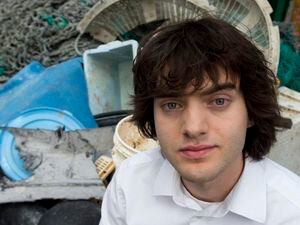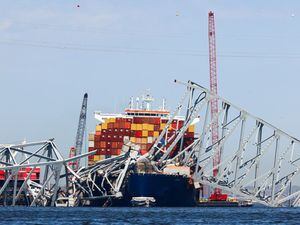Massive boom set to corral Pacific Ocean’s plastic rubbish
The system was created by The Ocean Cleanup, an organisation founded by Boyan Slat, a 24-year-old innovator from the Netherlands.

Engineers set to sea on Saturday to deploy a collection device to corral plastic litter floating between California and Hawaii in an attempt to clean up the world’s largest rubbish patch in the heart of the Pacific Ocean.
The 2,000ft long floating boom was being towed from San Francisco to the Great Pacific Garbage Patch – an island of rubbish twice the size of Texas.
The system was created by The Ocean Cleanup, an organisation founded by Boyan Slat, a 24-year-old innovator from the Netherlands who first became passionate about cleaning the oceans when he went scuba diving at age 16 in the Mediterranean Sea and saw more plastic bags than fish.
“The plastic is really persistent and it doesn’t go away by itself and the time to act is now,” Slat said, adding that researchers with his organisation found plastic going back to the 1960s and 1970s bobbing in the patch.
The buoyant, U-shaped barrier made of plastic and with a tapered 10ft deep screen, is intended to act like a coastline, trapping some of the 1.8 trillion pieces of plastic that scientists estimate are swirling in that gyre but allowing marine life to safely swim beneath it.
Fitted with solar power lights, cameras, sensors and satellite antennas, the cleanup system will communicate its position at all times, allowing a support vessel to fish out the collected plastic every few months and transport it to dry land where it will be recycled, said Slat.
Shipping containers filled with the fishing nets, plastic bottles, laundry baskets and other plastic refuse scooped up by the system are expected to be back on land within a year, he said.
Before the launch, Slat said he and his team would pay close attention to determine if the system works efficiently and withstands harsh ocean conditions, including huge waves.
He said he is most looking forward to a ship loaded with plastic coming back to port.
“We still have to prove the technology, which will then allow us to scale up a fleet of systems,” he said.
The Ocean Cleanup, which has raised millions in donations to fund the project, including from Salesforce.com chief executive Marc Benioff and PayPal co-founder Peter Thiel, will deploy 60 free-floating barriers in the Pacific Ocean by 2020.
“One of our goals is to remove 50% of the Great Pacific Garbage Patch in five years,” Slat said.
The free-floating barriers are made to withstand harsh weather conditions and constant wear and tear.
They will stay in the water for two decades and in that time collect 90% of the rubbish in the patch, he added.
George Leonard, chief scientist of the Ocean Conservancy, a nonprofit environmental advocacy group, said he is sceptical Slat can achieve that goal because even if plastic rubbish can be taken out of the ocean, a lot more is pouring in each year.
“We at the Ocean Conservancy are highly sceptical but we hope it works,” he said. “The ocean needs all the help it can get.”





